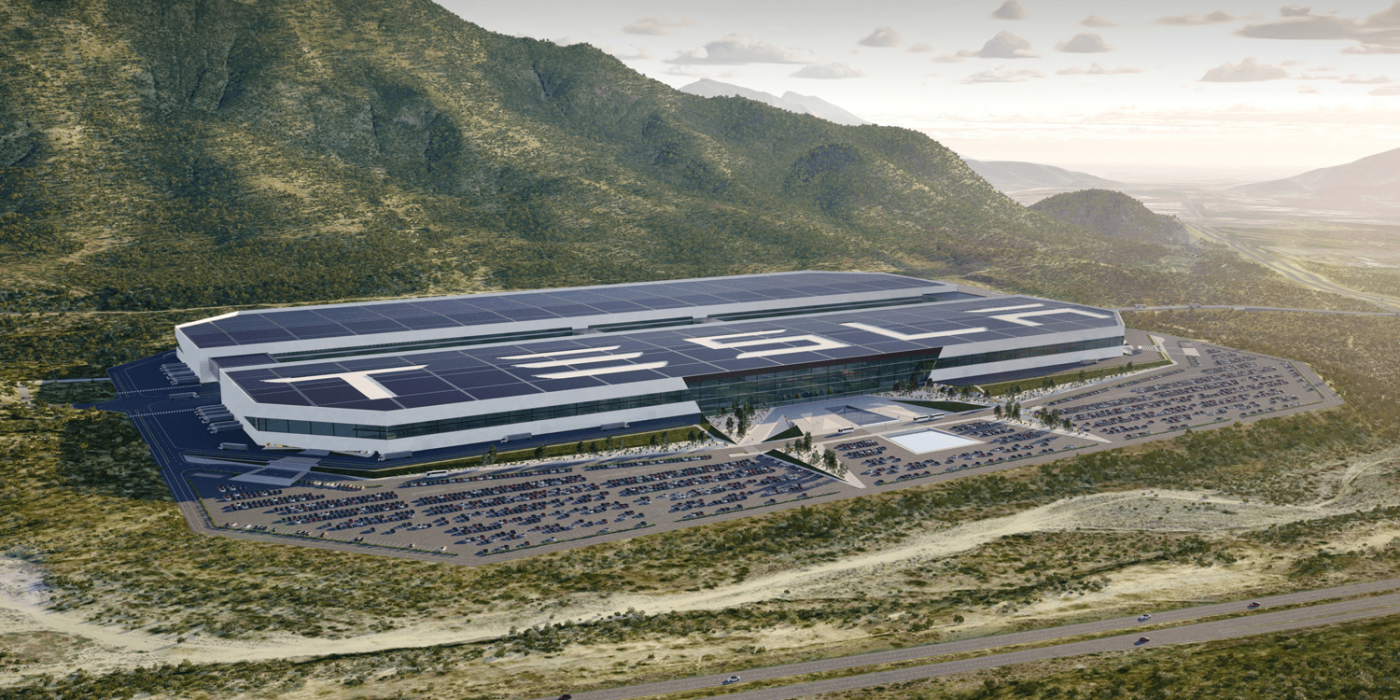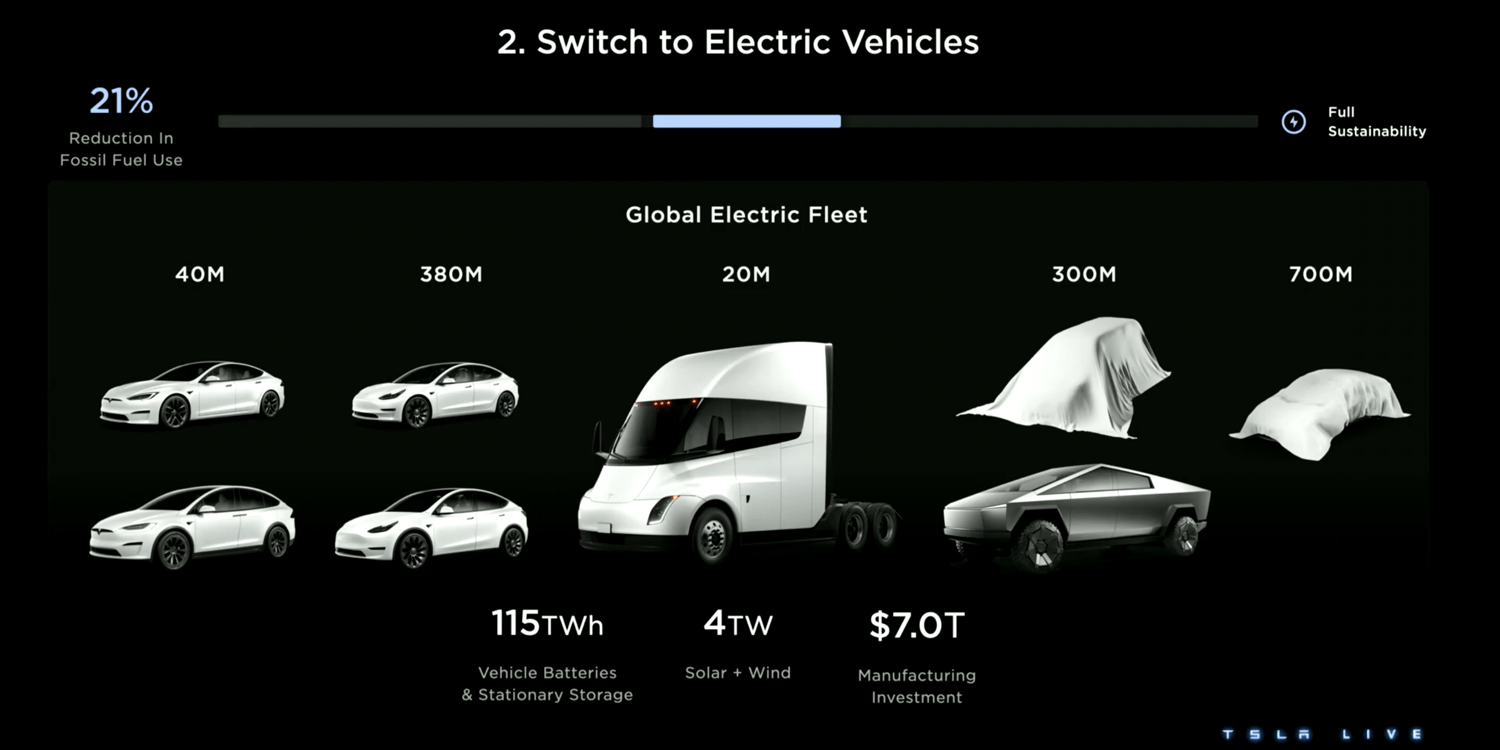Tesla announces new factory in Mexico and gives production strategy outlook
Mexico will soon be home to a new Tesla Gigafactory. The carmaker confirmed the location to build its “next-gen vehicle” at yesterday’s Investor Day at Tesla’s Gigafactory in Texas. CEO Elon Musk also gave some details about his ‘Master Plan 3’, which focuses on a renewable energy future – but much of it remains unclear.
The factory will be in the border state of Nuevo León. In December, local media reported that Tesla bought a plot of land in Santa Catarina. The factory will be “worth more than five billion dollars,” Tesla CEO Elon Musk said at the event, adding that it will be the world’s biggest electric vehicle plant to date. However, Tesla did not provide any details about the plant’s capacity, production start or investment.
Citing senior Mexican officials, Reuters says the new site will create as many as 6,000 jobs for the region. Even though it is still unclear how many cars the factory can produce, Tesla seems to follow a similar process in Mexico as it did for the Gigafactories in Austin and Grünheide, which had opened in 2022: First, the company will ramp up its vehicle production. On top of that, Tesla is considering setting up battery production in the country. “(Musk) is interested in investing more in Mexico,” Mexican President Andres Manuel Lopez Obrador told the news agency ahead of the presentation. “I told him lithium has been nationalized, but that doesn’t mean we can’t come to an agreement.
Tesla teases new models and cuts production cost
Tesla did not present a new, smaller model at yesterday’s Investor Day. At least not directly. Musk confirmed that the Cybertruck will hit the road this year and showed a slide with two models still covered up – one appears to be a smaller vehicle model, while the other looks like a van or a new SUV. Perhaps this is also a preview of the robotaxi announced in Master Plan II.
He added that the carmaker could offer as many as ten models to reach its annual sales target of 20 million units. There was also no mention of the possible Model Y update. Prior to the Investor Day, Reuters reported that Tesla is working on a new version under the codename ‘Juniper’. Aside from some visual updates and changes to the powertrain’s performance, Tesla will allegedly focus more on production efficiency – similar to what the carmaker plans to do for its next-generation vehicles.
While Musk did not give any further details about new models, he did announce plans to cut assembly costs in half for “next-gen vehicles “and to reduce the manufacturing footprint by 40 per cent. And a newly developed powertrain, the “next generation permanent magnet motor,” will allegedly not require any rare earth. Moreover, the next-generation platform will have 75 per cent less silicon carbide and accept any battery chemistry.
While there is plenty of room for speculation concerning future models, Tesla’s entry into the raw materials supply chain is becoming more concrete. The company announced to investors a lithium refinery in Texas. The plant, with a processing capacity of 50 GWh per year, will not be built in Austin near the factory, but as expected, on the Gulf Coast near Corpus Christi. It could go into operation as early as the end of the year.
Tesla did not specify where the lithium spodumene concentrate that will be processed into battery-grade lithium there will come from. Last year, Tesla signed offtake agreements with Liontown Resources for spodumene concentrate from Western Australia and with Piedmont Lithium from Canadian mining. In addition, there have recently been rumours that Tesla is interested in acquiring the lithium producer Sigma.
Master plan 3 for the energy future
All these short- and medium-term announcements are part of Musk’s long-term plan. However, Master Plan 1 and 2 still focused on Tesla and mobility in general.
In Master Plan 3, which has now also been unveiled, Tesla says its purpose is to “accelerate the world’s transition to sustainable energy.” Named (unsurprisingly) are the shift from internal combustion cars to EVs, the move to electric planes and boats, the use of heat pumps in homes, businesses and industry, the adoption of high-temperature heat delivery and storage for industrial processes, and a renewable energy and stationary power storage energy supply.
Much of the announcement is common knowledge. For example that fossil fuels can no longer be used once burned (whereas, in contrast, battery materials once mined can be recycled and reused). Tesla also circles back to the increase in production efficiency it announced earlier: “Our new unboxed manufacturing process will allow more work simultaneously on the vehicle—meaning we can build more vehicles at lower cost & with a much smaller carbon footprint,” Tesla twittered, confirming plans from the quarterly conference in October. It suggests that the total cost of ownership of the next-generation platform will also be lower than the company’s current portfolio.
Tesla share price drop
Musk says that 240 terawatt-hours of battery capacity worldwide would be enough to decarbonize transportation and energy. While cars, trucks and stationary storage are already beginning to show what that might look like, battery-electric solutions for long-range aircraft and ships are not yet standard. However, Musk did not go into detail about what such solutions might look like and what developments would still be needed.
Investors were apparently hoping for something more than the Master Plan, a plant announcement without further details, and improvements in the production of next-generation vehicles. Analysts criticized, for example, that the current model range was getting old. After the investor day, Tesla shares fell by five per cent in the after-hours trading.
twitter.com, reuters.com (Mexico), twitter.com (new models), twitter.com, twitter.com (powertrain), twitter.com (Master Plan 3), twitter.com (lithium refinery)






1 Comment